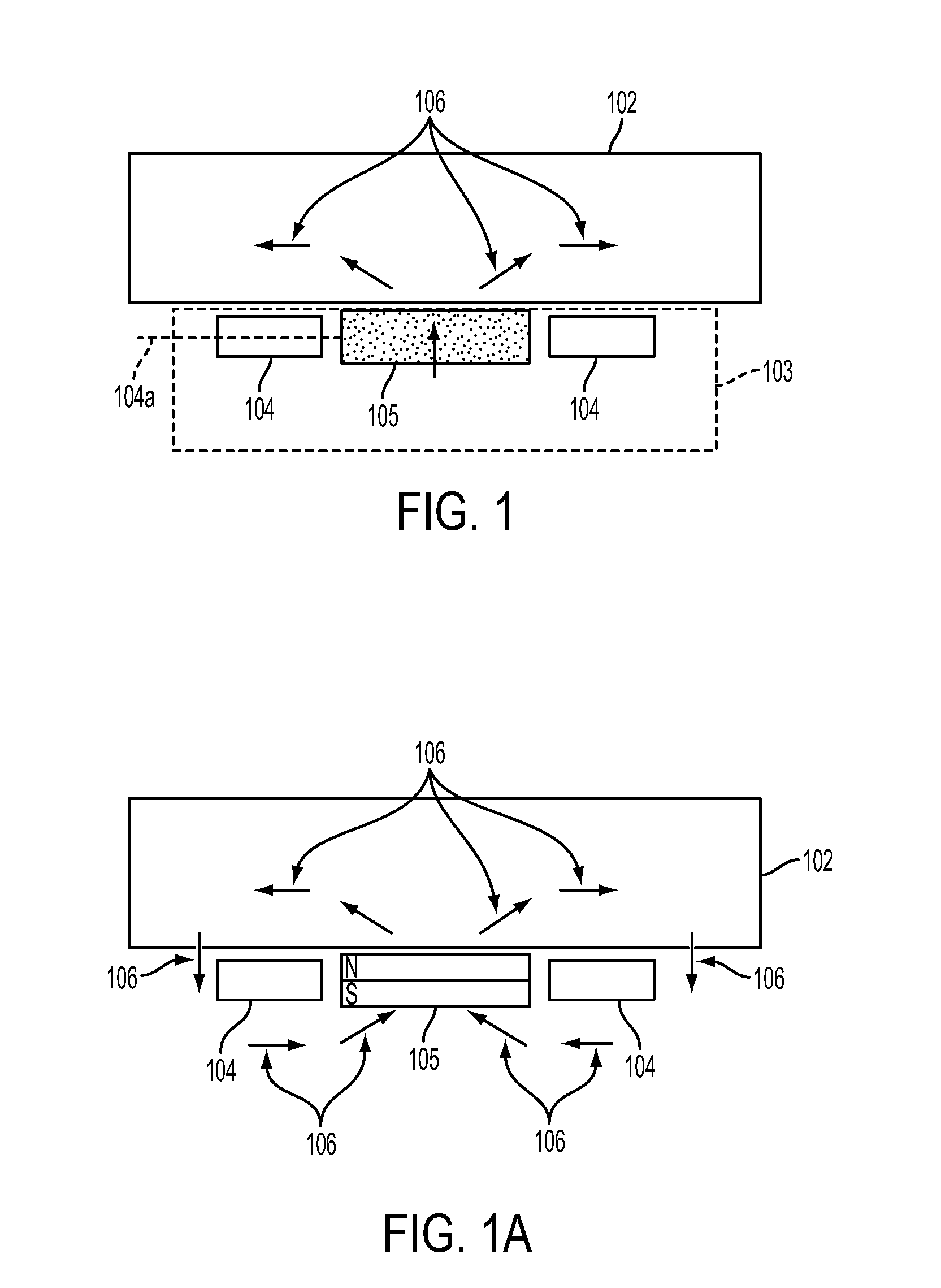Sensor arrangements for measuring magnetic susceptibility
a technology of magnetic susceptibility and sensor, which is applied in the direction of susceptibility measurement, electrochemical generator, instruments, etc., can solve the problems of affecting cell capacity, affecting the ability of cells, and the method of determining the state of charge by subtracting the amount of charge used from the amount of charge initially placed in the cell, so as to accurately measure the very low level of magnetic field strength
- Summary
- Abstract
- Description
- Claims
- Application Information
AI Technical Summary
Benefits of technology
Problems solved by technology
Method used
Image
Examples
Embodiment Construction
[0040]Several preferred embodiments of the invention are described for illustrative purposes, it being understood that the invention may be embodied in other forms not specifically shown in the drawings. The figures are described with respect to the system architecture and methods for using the system to achieve one or more of the objects of the invention and / or receive the benefits derived from the advantages of the invention as set forth above.
[0041]The present invention is directed to a sensor for measuring the magnetic susceptibility of an object by generating a magnetic field that permeates the object and by sensing the resultant changes in that magnetic field. The “object” of which the magnetic susceptibility is to be measured may be a volume with constant or variable magnetic susceptibility, as may be related to some other physical quantity or condition. Examples of the physical condition include but are not limited to the material temperature, the concentration of ions in th...
PUM
| Property | Measurement | Unit |
|---|---|---|
| state of charge | aaaaa | aaaaa |
| magnetic field | aaaaa | aaaaa |
| magnetization | aaaaa | aaaaa |
Abstract
Description
Claims
Application Information
 Login to View More
Login to View More - R&D
- Intellectual Property
- Life Sciences
- Materials
- Tech Scout
- Unparalleled Data Quality
- Higher Quality Content
- 60% Fewer Hallucinations
Browse by: Latest US Patents, China's latest patents, Technical Efficacy Thesaurus, Application Domain, Technology Topic, Popular Technical Reports.
© 2025 PatSnap. All rights reserved.Legal|Privacy policy|Modern Slavery Act Transparency Statement|Sitemap|About US| Contact US: help@patsnap.com



